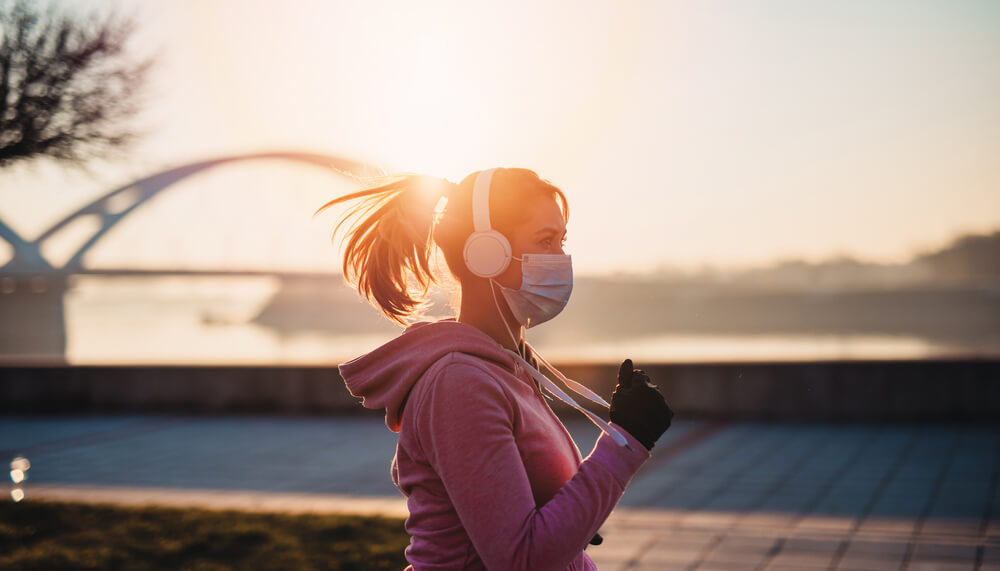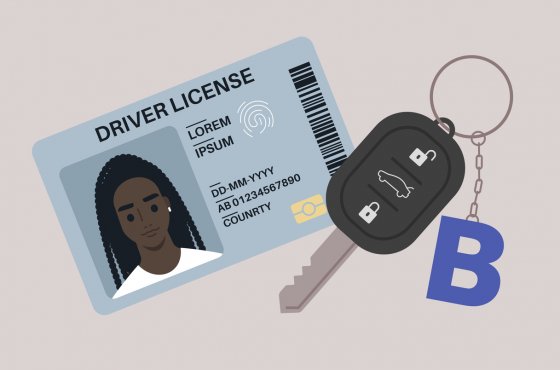WHO withdraws claim that people with asymptomatic COVID-19 are not contagious
On June 10, experts from the World Health Organization tried to clarify the statement that asymptomatic transmission of coronavirus occurs in “very rare” cases, writes MarketWatch.

Photo: Shutterstock
WHO's Technical Director for COVID-19 Response Maria Van Kerchow said it was “a misunderstanding claim that asymptomatic transmission in the world is very rare”And that her comments during the WHO news briefing were based on“ a very small subset of the studies ”.
“I was simply answering a question; I did not declare WHO policy,” she said.
WHO estimates that currently 16% of people with COVID-19 are asymptomatic and can transmit coronavirus, while other data show that 40% of coronavirus transmission is due to cases of asymptomatic carriage.
Health officials recommended that people stay 6 feet (about 2 meters) apart. Face masks are designed to prevent the transfer of invisible drops to another person and, thus, not to infect him. This is also protection from a person who may be infected with COVID-19, but who has very mild or no symptoms.
But "there's nothing magical about six feet," said Gregory Poland, who studies the immunogenetics of vaccine responses in adults and children at the Mayo Clinic in Rochester, Minn., and is an expert with the Infectious Diseases Society of America.
“The virus doesn’t measure distance,” he said. “For example, a viral cloud during a conversation extends 27 feet (8,2 meters) and lingers in the air for about 30 minutes. It's more like the flu in the sense that people transmit the virus before they have any symptoms, and some of course won't get sick."
The asymptomatic transmission “is the Achilles heel of the fight against the COVID-19 pandemic using the public health strategies that we are currently implementing,” according to a study by experts from the University of California, San Francisco, published May 28 in the New England Journal of Medicine.
“Symptom-based screening is useful, but epidemiological assessments of COVID-19 outbreaks in skilled nursing facilities strongly demonstrate that our current approaches are inadequate,” wrote researchers Monica Gandhi, Deborah Yokoe and Diane Havlir.
On the subject: WHO: quarantine weakening could lead to a second wave of coronavirus outbreak
Symptom detection and subsequent testing to determine isolation and quarantine procedures were justified by the similarities between SARS-CoV-1 (the virus that caused SARS SARS) and SARS-CoV-2 (the virus that caused the coronavirus infection COVID-19), the researchers wrote.
Gandhi, Yokoye and Hawlir stated that these symptoms include a high genetic link between viruses, transmission mainly through the respiratory drops and regularity of symptoms in the lower respiratory tract (fever, cough and shortness of breath), with both infections developing on average 5 days after infection.
“Despite the deployment of similar control measures, the trajectories of the two epidemics took very different directions,” they added. “SARS was brought under control within 8 months after SARS-CoV-1 infected approximately 8100 people in limited geographic areas.”
The number of confirmed COVID-19 cases continues to rise. Less than 6 months after the novel coronavirus was first reported, the COVID-19 pandemic, first identified in Wuhan, China in December, has infected 7 people worldwide and 960 in the United States as of Monday, June 856. At least 2100 people have died worldwide, 749 of them in the United States, according to the Johns Hopkins University Center for Systems Science and Engineering.
Here are five reasons to worry about asymptomatic virus transmission:
1. COVID-19 creates a high viral load in the upper respiratory tract
A study by the University of California at San Francisco showed that there is a high viral load of SARS-CoV-2 in the upper respiratory tract, even among presymptomatic patients, "which distinguishes it from SARS-CoV-1, where replication occurs mainly in the lower respiratory tract" .
“Viral loads in SARS-CoV-1 associated with the onset of symptoms peak on average 5 days later than viral loads in SARS-CoV-2, making symptom-based detection of infection more effective in the case of SARS CoV-1,” the researchers wrote.
Regarding influenza, they added, "people with asymptomatic disease usually have a lower quantitative viral load in secret from the upper respiratory tract than from the lower respiratory tract and a shorter duration of virus isolation than people with symptoms."
2. Outdoor joggers can create a viral trail of up to 30 feet (9 meters)
In April, after several weeks of confusion about the effectiveness of face masks, the Trump administration and the Centers for Disease Control and Prevention announced that Americans should wear them. Some studies show that transmission of the virus is more likely without a mask.
"A person running who doesn't yet know they're sick and runs in front of you is likely to infect you with a current of air that travels up to 30 feet behind them," Poland said. “At 6 feet, the largest respiratory droplets settle on the ground.”
“The WHO told us that wearing a mask is not necessary, and then it is necessary,” he added. “If only a few people are sick in a hospital ward, you can still culture the virus from doorknobs and light bulbs. It may also be that the risk of transmission is higher when people cough and sneeze.”
3. Some experts say the effectiveness of the masks is mixed
“Unless you're wearing a PAPR, a self-contained breathing apparatus, it's not really safe,” Poland said. — These are the so-called spacesuits. The only thing we can say is that it is safer than without them. You can't be 100% safe with social distancing and masks."
“All these things together form a network of your protection. You do not get in a car without seat belts, brakes, tires, airbags. Even one of these things matters. The same applies to the so-called non-drug interventions. ”
Poland added: “I worry that people who have antibodies or who get the vaccine will be given a sort of 'free pass'. This virus has very specific immunological secretions contained within it. We're still studying influenza and have been working on it since the 1940s."
On the subject: On the street, in the store, in the office: how to protect yourself from the coronavirus while quarantining
4. A contact tracking system is critical
“Asymptomatic transmission increases the need to expand widespread testing capacity and rigorous contact tracing to identify asymptomatic infections, interrupt undetected chains of transmission, and further bend the curve downward,” the CDC guidelines say.
If it is determined that the cause of the new coronavirus pandemic is asymptomatic or slightly asymptomatic carriers of SARS-CoV-2 infection, “innovations in the detection and prevention of diseases may be required in addition to exhaustive contact tracing, mass testing and isolation of asymptomatic contacts.”
The CDC said that it is necessary to know more, in particular, whether these people develop full or partial immunity, how long protective immunity lasts, and whether it is possible to be protected from reinfection and at the same time transfer COVID-19 to another person, remaining asymptomatic.
5. Asymptomatic and presymptomatic is a bad combination
According to a study by William Petrie, a professor of medicine and microbiology at the University of Virginia who specializes in infectious diseases, 10 to 43% of people infected with COVID-19 (depending on the sample group) did not have symptoms of the disease.
“Asymptomatic SARS-CoV-2 infection appears to be common and will continue to complicate efforts to control the pandemic,” Petrie wrote. - Asymptomatic carriers also range from 5% to 25% for influenza.
As many US states reopen, Carlos de Rio, a professor of global health and epidemiology at the Rollins School of Public Health at Emory University, said it’s best to avoid long contact with others.
“Working in an office with someone is what worries me,” he said.
Read also on ForumDaily:
Bankrupt due to coronavirus: 4 retailers who arrange a total sale
Permanently or permanently: for how long can complications remain after coronavirus?
Over $ 1 million: Seattle resident cured of COVID-19 and shocked by medical bill
18 Ways to Cut US Medical Costs
Subscribe to ForumDaily on Google NewsDo you want more important and interesting news about life in the USA and immigration to America? — support us donate! Also subscribe to our page Facebook. Select the “Priority in display” option and read us first. Also, don't forget to subscribe to our РєР ° РЅР ° Р »РІ Telegram and Instagram- there is a lot of interesting things there. And join thousands of readers ForumDaily New York — there you will find a lot of interesting and positive information about life in the metropolis.











